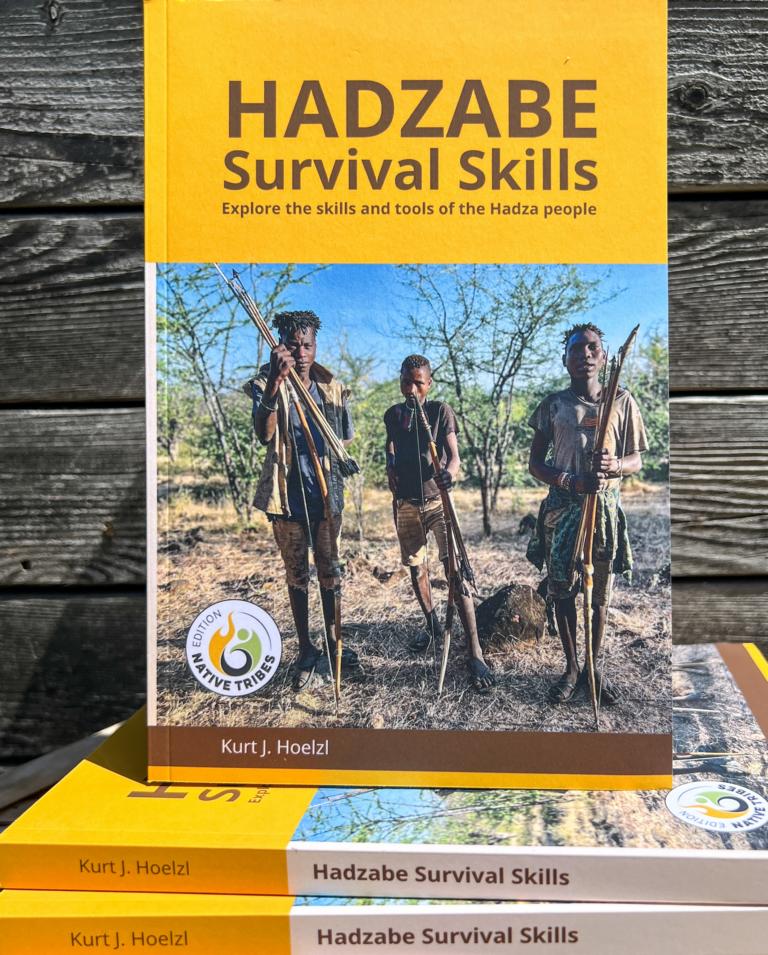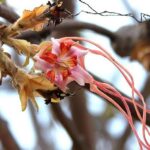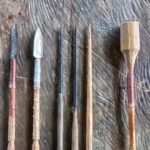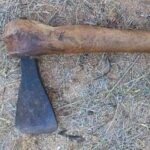Datoga people are spread over a wide area on the Masai steppe in Northern Tanzania. Their main stronghold is around Lake Eyasi. There, especially in the Yaeda Valley, they live close to the Hadzabe people. Masais pressed Datogas into less fertile areas for their cattle. They, in turn, increased the pressure on Hadzabes by living on their land and grazing large livestock herds there. The whole second half of the year, Datogas are allowed by the government to graze their livestock on Hadzabe land. This degrades the vegetation of the Hadza’s communal land to such a point that the Hadzabe even have difficulties finding their traditional medical plants. Furthermore, the Datogas also go hunting on this land without opposition from the Hadzabe. These hunting trips are only done during the off-time of their pastoral duties, mainly opportunistic ambush hunting during the daytime.
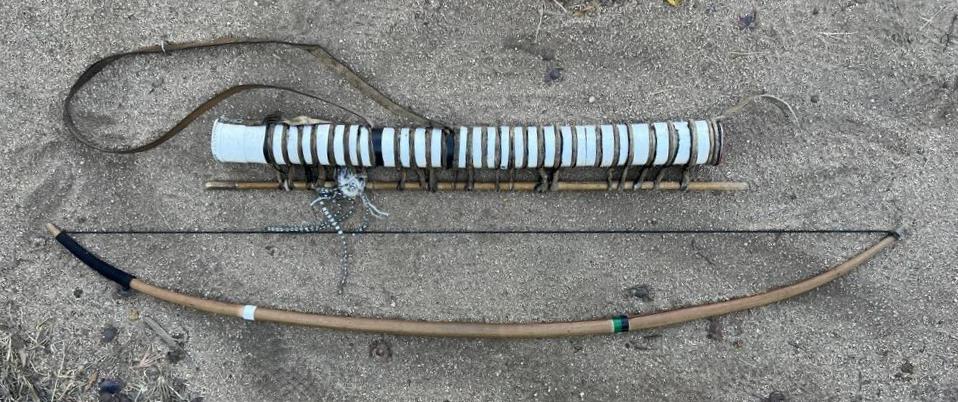
They hunt only with bows and arrows and do not use traps, snares, lances, or other hunting tools. Their bows and arrows are similar to the Hadzabe’s but appear more refined. They also use a quiver to hold their arrows and firesticks, which Hadzabe people do not have.
Datoga bows
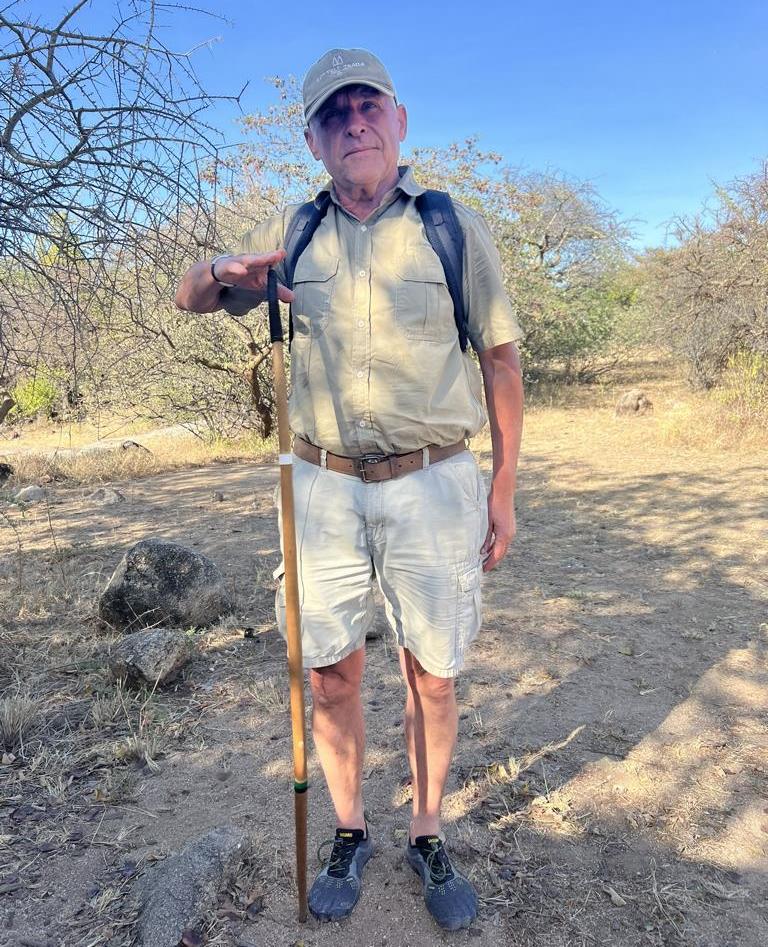
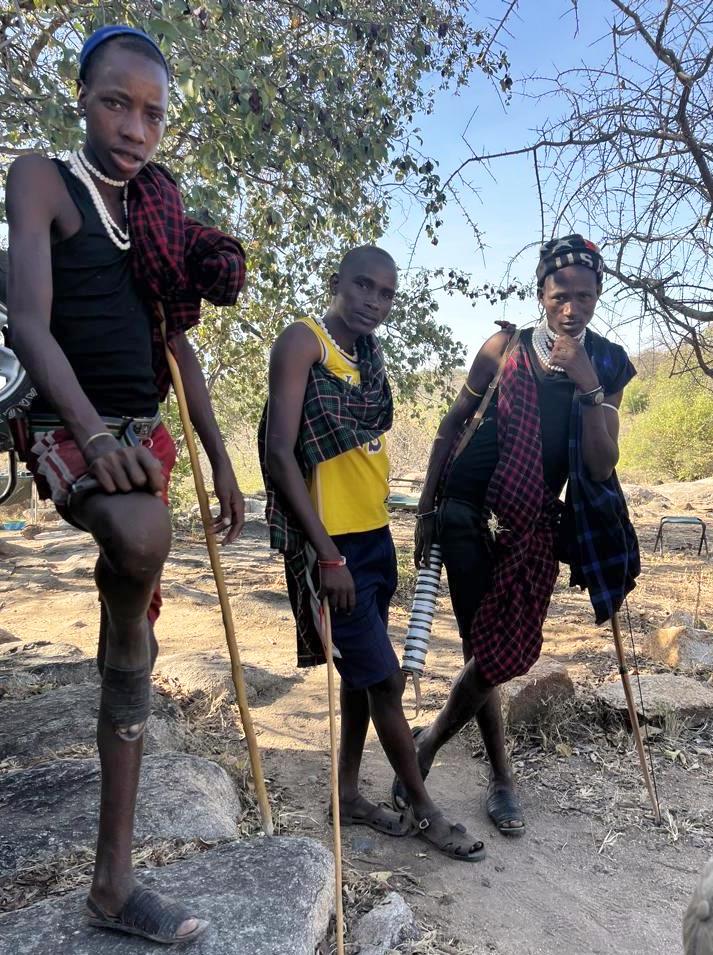
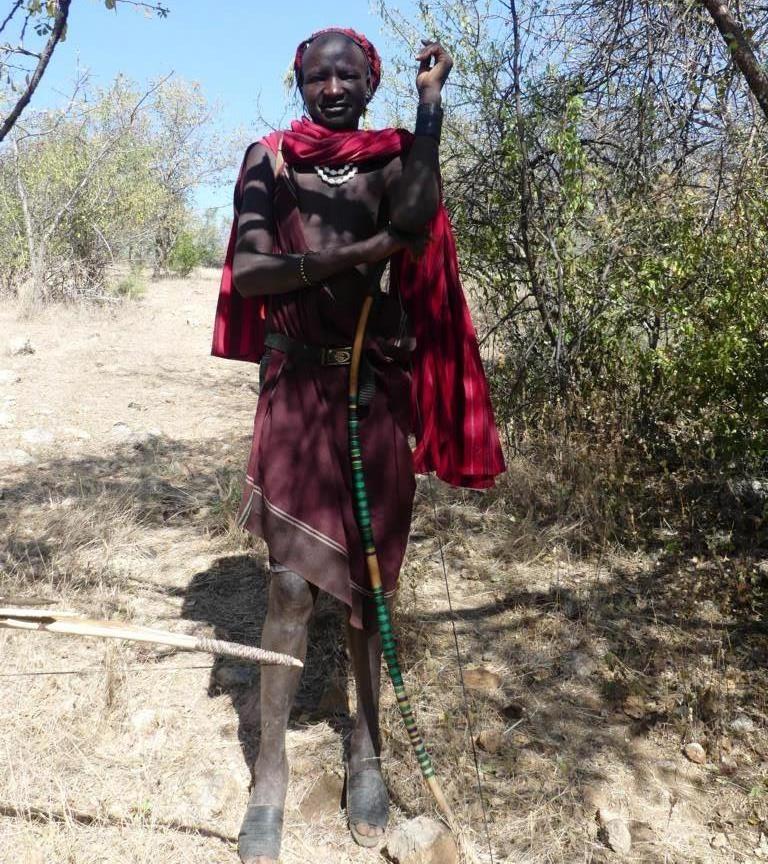
The Datoga bows we saw were about 135cm / 53’’ long between the two string fixation points. The diameter at the midshaft was around 2.5cm / 1’’, and the brace height was about 25cm / 10’’. In summary, these Datoga bows were smaller and slimmer than the bows of the Hadzabe people.

The author is unaware of the wood species used for the bow stave, as it was challenging to communicate with them. The shape of the bow stave was round along the whole length and tapered off gradually in diameter towards both ends. There were no nocking slits on either end.
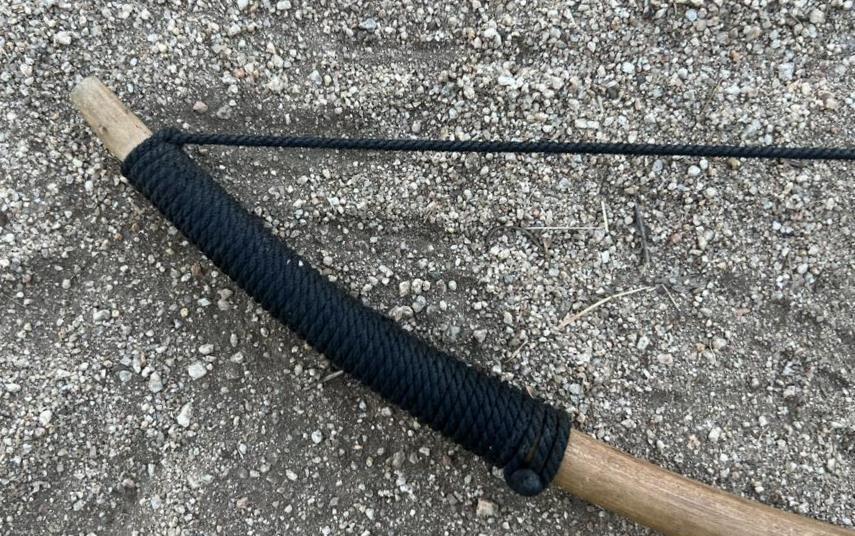
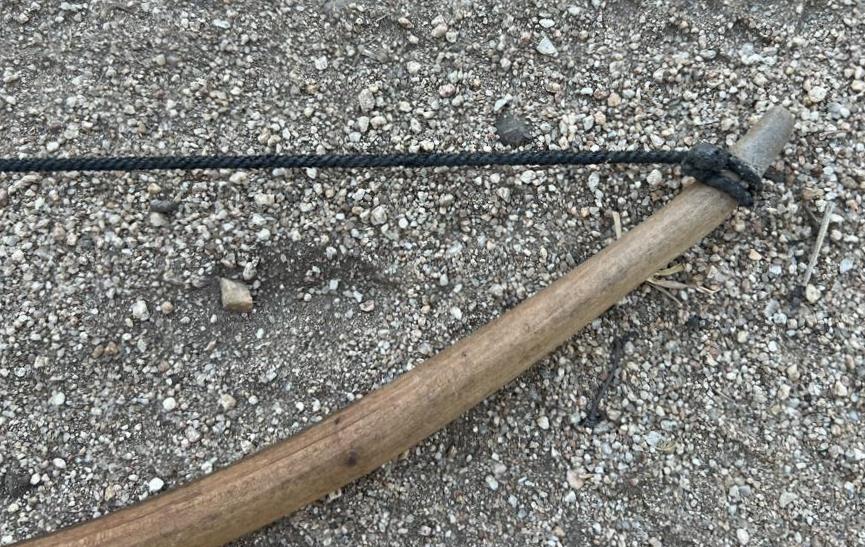
Nylon rope was used as a string and fixed in the same way as the Hadzabe people. However, Datogas wrapped the string around the stave meticulously and carefully.

To avoid splitting the bow wood over time when drying, they tightly fit green sections of water hoses and black sections of PU pipes alternatively onto the stave. However, white sections of PU pipes were also seen.
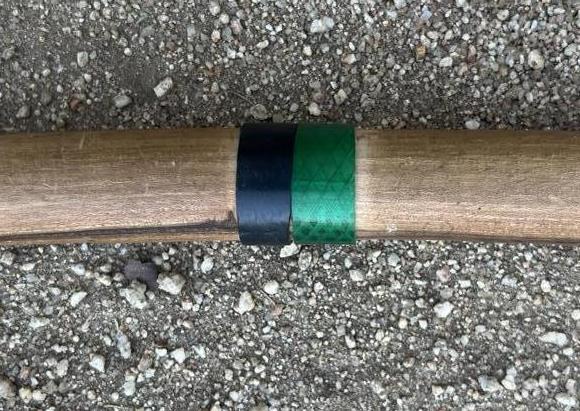
Datoga arrows
The Datoga people’s arrows are about 90cm / 35’’ long and have a uniform diameter of 7.5–8mm / 0.29–0.31’’. Again, we are unaware of their wood species, but it is not Grewia bicolor. The Datogas we met usually lived in the lowland down at Lake Eyasi, and they only came with their livestock into the hills. Therefore, they have access to a variety of different wood species.
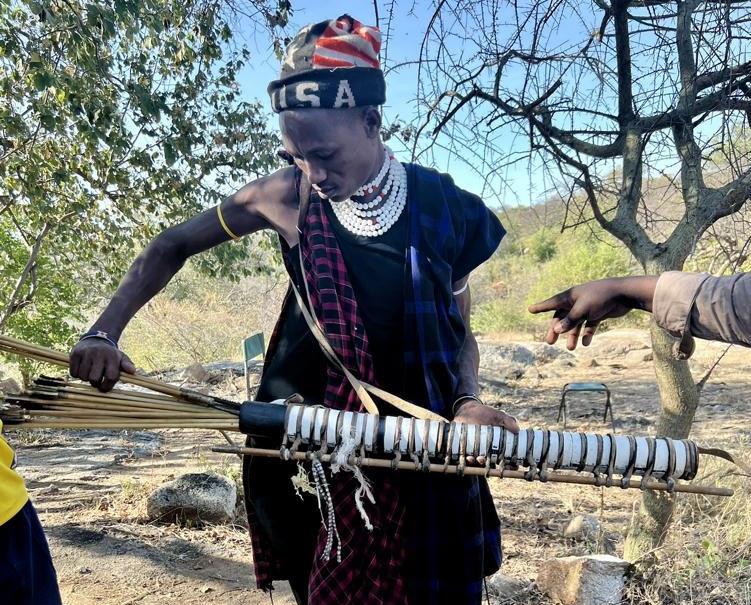
Arrowheads
We saw five different types of arrowheads. All were made of metal, and none were made from wood. This may also be related to the fact that Datogas are skilled blacksmiths. Due to the limited time between livestock tending, they do not have the time to sharpen the wooden tip after every shot on a hunt. The following types of arrowheads were seen:
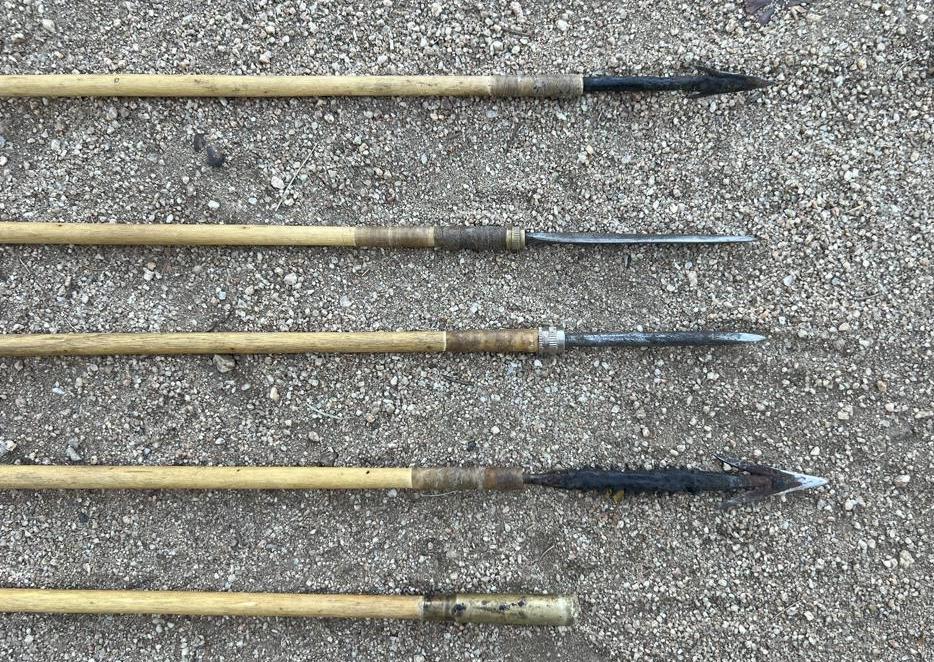
Spike-type iron arrowhead
This type of arrowhead appeared to be just a pointed nail. It is used for small game, like squirrels, rock dassies, and many others. Hadza people use their arrows with wooden tips in these instances.

It is interesting to note that the neck of the arrow shaft is reinforced with a metal cap. The section of the arrow shaft where the reinforcement wrapping is behind the cap was reduced in diameter. Therefore, the wrapping has the same outer diameter as the arrow shaft behind. This makes it easier to retrieve the arrow from an animal’s body. Furthermore, it is a testament to the craftsmanship of the Datoga people.
Another observation was made: The enforcement wrapping around the arrow shaft’s neck was not done with the ligament or sinew of animals as the Hadzabe people did. They used an animal-based material that is broader and thinner than any ligament. Therefore, I highly suspect these are stripes of fresh sheep- or goat guts wrapped around the arrow neck and left to dry.
Lance-type iron arrowhead
In practical terms, there is little difference between a spike-type- and this lance-type arrowhead. This lance blade cuts wider but is still restricted in opening blood vessels. An advantage is its aerodynamic shape. The main application will be on thin-skinned, medium-sized animals, like Dik-Diks, Vervet monkeys, Aardvarks, and other animals.


It is also interesting to see that the area behind the initial wrapping was reinforced additionally by another wrapping. That means this arrowhead has a long extension into the shaft. The head is, therefore, not supposed to separate after impact but remain fixed with the shaft.
Single-barbed and poisoned iron arrowhead
These arrowheads have the same appearance as those used by the Hadzabe people. Cold-forging of this type was described in another article on this website. The arrowhead shaft of this Datoga broadhead is shorter and thicker than the cold-forged Hadza arrowheads; therefore, it was hot-forged.

The black substance on the arrowhead shaft is arrow poison, extracted from Adenium plants (Desert rose, Impala lily). Its making was described in this article on the website here. A considerably lower amount of poison is used than what other tribes use of the same arrow poison. Nevertheless, that is probably enough poison for middle-sized antelopes like Impalas, Grant gazelles, or Gerenuks.
Double-barbed and poisoned iron arrowhead
This is the commonly known shape of Datoga arrowheads. Nowadays, Datoga blacksmiths typically produce these two rows of spines behind the barbs for visiting tourists. However, these spines also have practical value.

The above picture of a genuine, used hunting arrowhead gives insight into the primary function of these spines. They not only hold the black poison in place but also inflict further minor wounds within the animal’s body, which helps to distribute the poison faster.
This arrowhead sticks only a short distance within the arrowshaft. It is, therefore, supposed to break away from the shaft after impact or during the game animal’s flight.
Such arrowheads are used to shoot big antelopes, such as Kudus and Elands, or other big animals, like Zebras or Giraffes.
Blunted arrowhead with cartridge case
As the reader will already have gathered, Datoga people like to use metals for their tools and implements. Just shooting birds with wood, bones, animal glands, or corn cobs is not their world. Metal is more durable.

They showed us what they used for bird hunting and practice shots. It was a spent .308 Win cartridge casing hammered onto the tip of an arrow shaft. The 7.62mm inner diameter of the cartridge neck fitted ideally to its slightly less than 8mm thick shaft. The case head was already heavily worn out, so they had used this blunt arrow repeatedly.
Arrow nocks
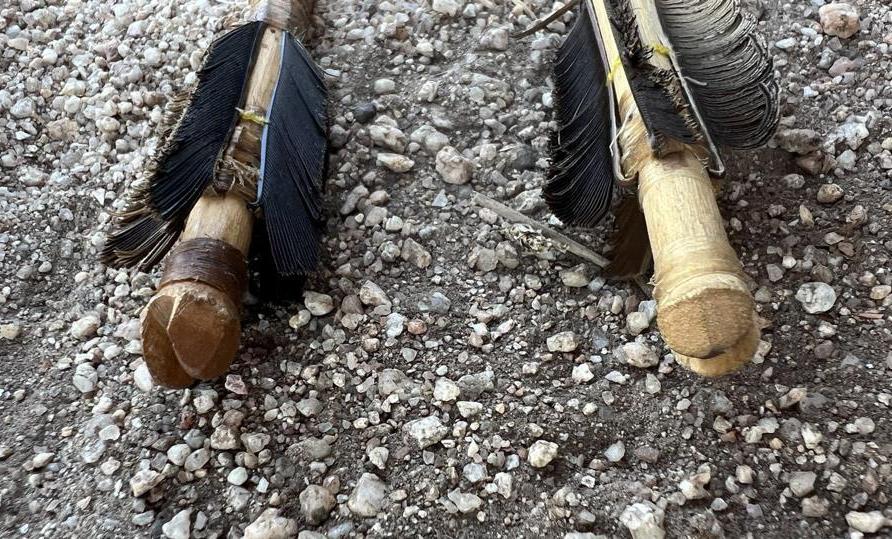
The arrow nocks were meticulously carved with a half-round arrow rear end and two-edged facets on either side of the slot. The sling-holding slot had straight sidewalls inside and a flat bottom at each arrow. Right behind the nock area, a binding with dry raw guts secured the nock against splitting. All in all, this is high craftsmanship.
Arrow fletchings
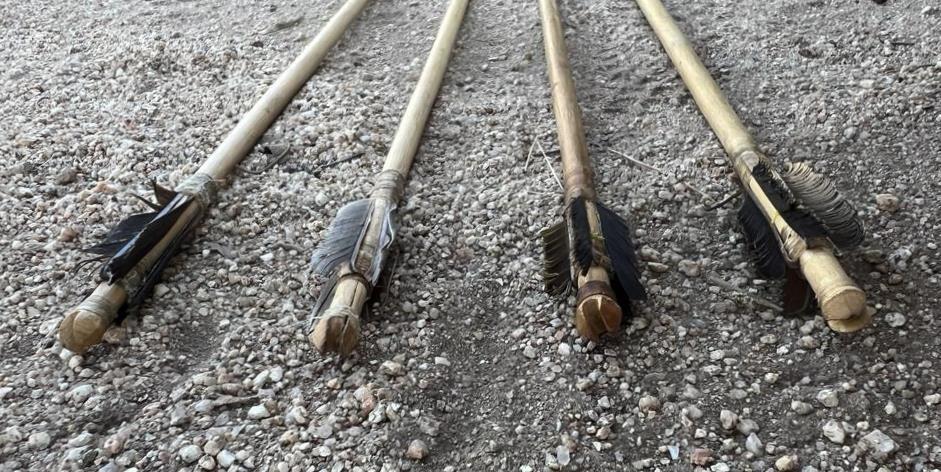
The fletching of Datoga arrows is done in principle like the Hadzabe people do. Feathers of the required stiffness are cut to length and bound near the nock area toward the arrow’s rear end. Then, they will be turned over and bound at the required length towards the arrow tip. Finally, the length and shape of the feather will be cut.
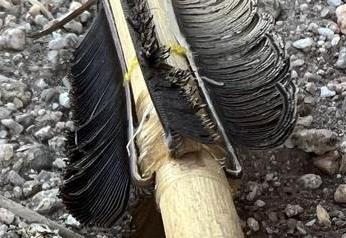
Datoga people add one more step. They bind down the four feathers of the fletching in the middle with a thin, yellow-colored yarn to the shaft. No glue is used, and the feathers rachises are not left bulging.
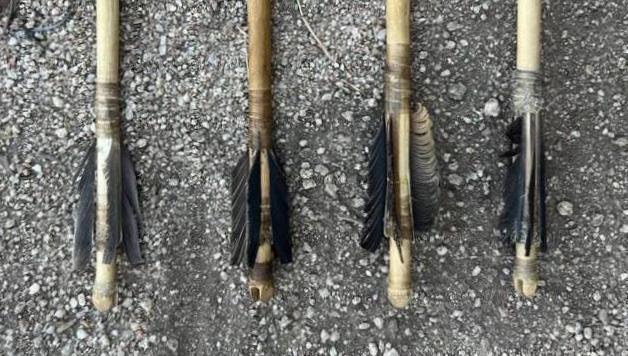
On all the arrows we saw (about 20 different arrows), the Datoga people used the primary and secondary wing and tail feathers of Von der Decken’s Hornbills (Tockus deckeni).
The feathers of all arrows, however, appeared to be ragged and untidy. Many vanes were broken or were sheared off the rachises. On one hand, this was due to crammed packing in their quivers. They packed up to 16 arrows into a 10cm / 4’’ diameter pipe. On the other hand, they always use four vanes on the shaft, with one vane perpendicular to the nock (and string). This will invariably lead to shearing off this vane when shooting. Although arrow shafts, heads, and nocks are impeccably made, fletching is weak.
Datoga quivers
The Datoga people can be immediately recognized in Northern Tanzania by their uniquely styled quivers. Other tribesmen also like to wear red-colored textiles (shukas) and various ornaments, but the quivers distinguish them.
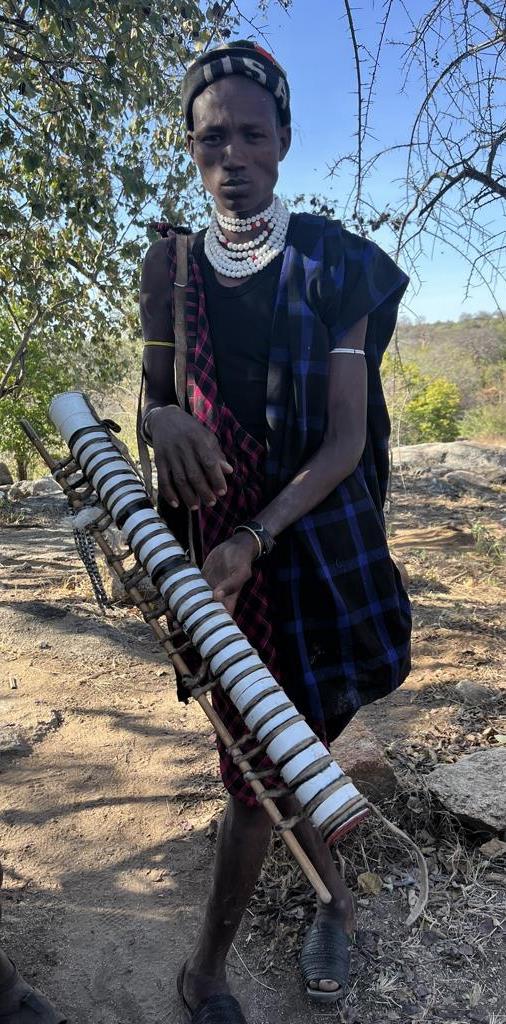

Practically oriented, Datogas use sections of 4’’ PVC pipes as the arrow-holding device. I only saw black and white pipes, but blue and grey colors are also locally available at markets. One end will be permanently closed, and the other will receive a homemade cap of either PVC material or metal.
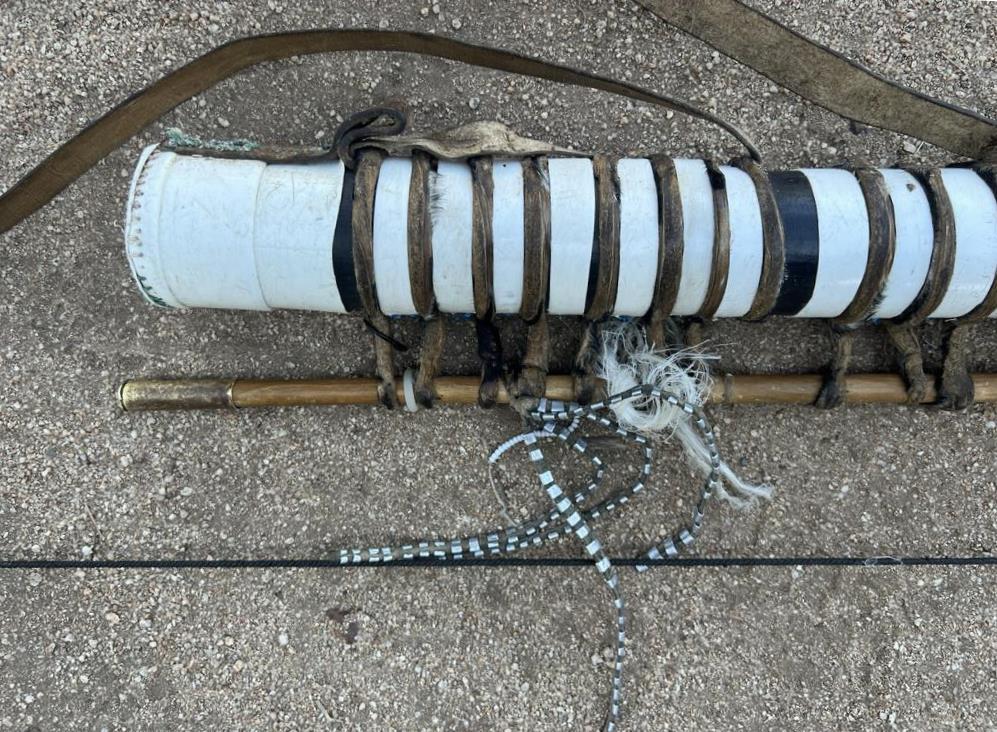
Then, they take a hardwood stick with a diameter of about 19mm / ¾’’ and a length of the capped quiver + 10cm / 4’’. They connect this stick with the PVC pipe via rawhide stripes and keep a distance between the pipe and stick of about 45mm / 1.77’’. After drying, the rawhide stripes serve as rugged connection elements between the pipe and stick.
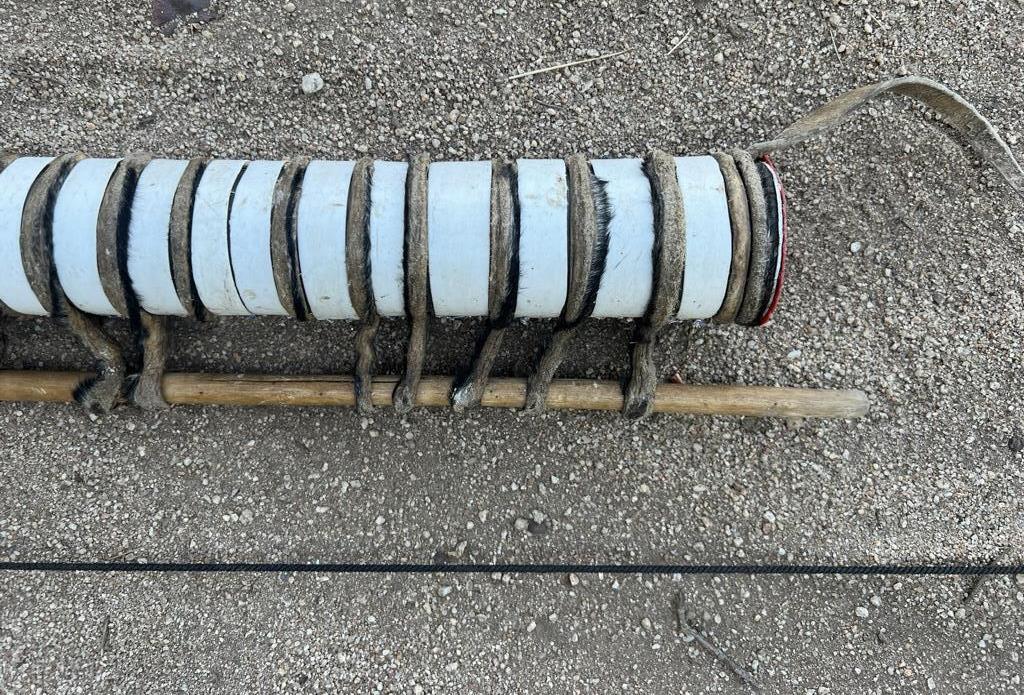
The stick on the upper side extends to the height of the pipe. On the lower side, it extends about 10cm / 4’’ below the bottom end of the pipe. This arrangement allows the quiver to be left standing when not used and keeps the poisoned arrow tips off the ground when it is wet or raining. Because the arrow tips are always located at the bottom of the quiver, and the Adenium-poison is highly water-soluble.
This quiver design is unique among the various tribes of Tanzania.
Lessons learned from bows, arrows, and quivers of the Datoga tribe:
- The Datoga people of Tanzania use bows and arrows like the Hadzabe people for ambush hunting.
- Their double-barbed arrowheads and quivers are uniquely styled.
- Arrow poison will be extracted from Desert rose plants.
- The design of their quivers will keep the poisoned arrowheads from potentially wet floors due to the water-solubility of the Adenium poison.
.

